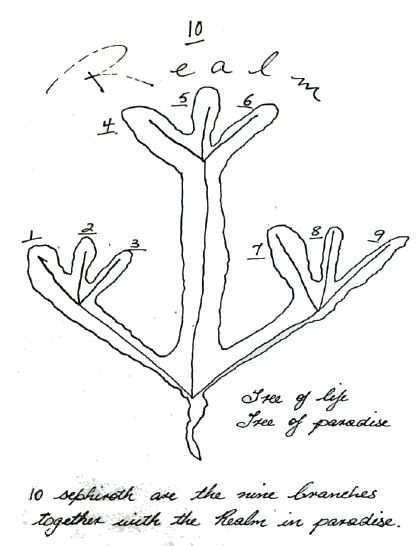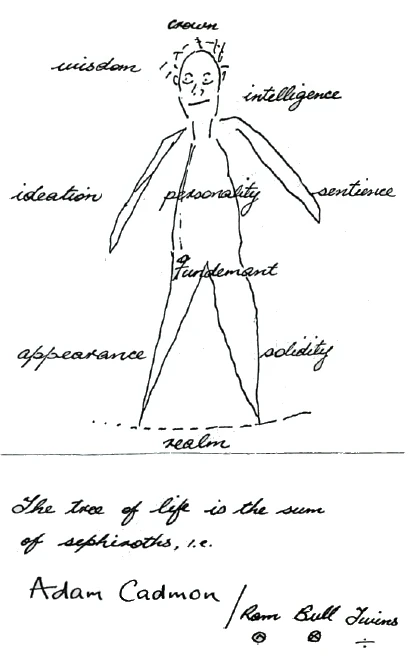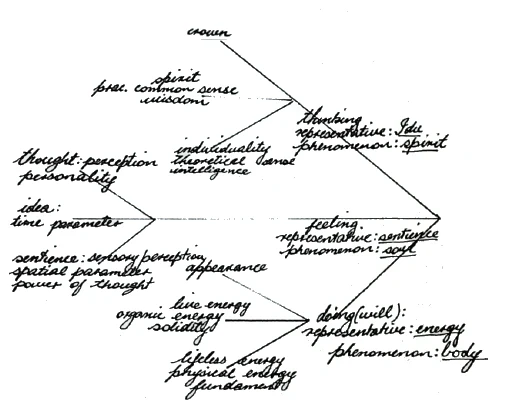Awareness - Life - Form
GA 89
About the Cabbala
18 March 1904, Berlin
We have seen that the Bible can be more and more deeply understood the more we penetrate into theosophical teaching. Today, however, you will see how theosophy, theosophical wisdom, existed for millennia, merely having different names, words and so on at different times. Today’s brief outline will be of something which was taught among the Jews of old. Today, the Cabbala100From the Hebrew, means tradition; refers to the secret teaching of medieval rabbis derived from earlier occult doctrines. is something the profound wisdom of which is little understood even among Jews. It will sometimes emerge where you would least expect it. If you were to meet a learned Jew coming from furthest Galicia, who does not take much care with how he looks, so that he may look repulsive to civilized people, you may find that he still knows something of cabbalistic wisdom. In Austria these people are called ‘miracle rabbis’ for they have some knowledge of magical arts, being able to use suggestion much more effectively than our modern physicians do, for example. They are also initiated to a certain degree. Let me first of all say something about what is written in the Cabbala. You will find it said in my Theosophy that the occult teaching in the Cabbala agrees with the things taught in theosophy.
The Cabbala distinguishes twelve principles in the world, the first and last of which remain secret because they cannot be put into words at all.101In the 12th chapter of Agrippa von Nettesheim’s Kabbala, ‘The ten and its ladder’, it says: ‘God himself, the first monas, divides before he imparts himself to lower elements, first into the triad, then into the ten, which is like into the ten ideas and measures of all numbers and all that can be generated, which the Hebrews called the ten divine properties, designating them with ten special names for the godhead, which is also why there can be no more than ten.’ Generally reference is made only to one which cannot be known and which is above the ten sephiroth (ain soph, also spelled en soph; ain means ‘nothing’). Only the other ten are put in words. They are divided into three groups. Firstly, the ‘spirit world’, the world of purely spiritual entities, secondly the world of the soul, and thirdly the world of bodily nature.
A Cabbalist will immediately say to each of his students: ‘You will never see one of these three worlds with your eyes, for at any time you can only see the “realm”.’ The ‘realm’ is our own world around us.102Concerning the concept ‘realm’ see also the discussion of the Lord’s Prayer in a lecture given in Berlin on 28 January 1907 in GA 96 Tr. A.R. Meuss, London, Completion Press 2001. I see a person, the Cabbala student will say, but what I am seeing is in the ‘realm’. In reality this human being is in the threefold world. He has body, soul and spirit. Through the body he breathes and feeds himself; through the soul he feels, and through the spirit he thinks. All this presents itself to us as a whole, as the ‘realm’. This is the tenth of the principles. This tenth principle is something in which the other nine come together in many different ways.
Firstly, the world of the bodily principle. This also has three parts. Every body is in itself. If it were not in itself, it would not exist at all. If you come up against it, you perceive its solid state. If it comes up to you, you perceive its appearance. Thus distinction is made between fundament, solidity, appearance. These are the three sephiroth103Sephiroth, plural of sephira (sef = number). The Hebrew plural tends to be generally used also in the singular. The ten sephiroth together symbolically are ‘Adam Kadmon”, the heavenly human being before the Fall. See the sketch Archive No. NZ 455 in this volume. In answer to questions following a lecture given in Leipzig on 12 January 1908, Rudolf Steiner said the following on the ten sephiroth, with reference to cosmology: ‘The ten sephiroth refer to periods of time, stages of evolution which the human being went through. The physical body went through four stages of evolution: Saturn, Sun, Moon and Earth. The ether body three stages: Sun, Moon and Earth, the astral body two: Moon and Earth. The I is in its first stage. Together this makes ten.’ (The lecture notes available for this lecture are not adequate for publication of the whole lecture.) of bodily nature. We now have four sephiroth:
realm 10 solidity 9 fundament 8 appearance 7
Secondly: soul world. Again three sephiroth. The first is what we now call sympathy in theosophy; the Cabbala calls it love. Love is what the soul body gives off when it comes to another. Just as solidity comes to me from another body, so love is what I give out. 6 The second of these sephiroth is grace. This is not merely giving out, like love; it is more held in; it does not give itself the way love does, but gives something 5 to the outside from inside.
The third sephiroth is justice, which merely balances 4 things out.
Those are the three soul sephiroth.
Now for the sephiroth of the spirit world. They are the principle which is truly active.
The first is called ‘world mind’ in the Cabbala 3
The second the ‘world thought’, the mind which has 2 the thought
The third is the basic sephiroth, called the ‘height’ or ‘crown’ by Cabbalists (kether - the height). 1
These are the ten sephiroth. The Cabbalist then says to his student: you have part of each of these worlds in you. From the bodily world you have the vegetative soul (nephesh), plant soul, etheric double body. From the soul world you have the passion soul, the sentient soul (ruach), and from the spirit land you have the thinking soul (neshamah).
These are the bare bones of Jewish occult teaching.*There followed notes referring to early Gnostic teachings. These have been omitted, being not only full of gaps but also distinctly faulty. Nor has it been possible to track the information down in the source works used by Rudolf Steiner. All the notes for the lecture have, however, been printed in their entirety [in German] in Beiträge zur Rudolf Steiner Gesamtausgabe Heft 29.





